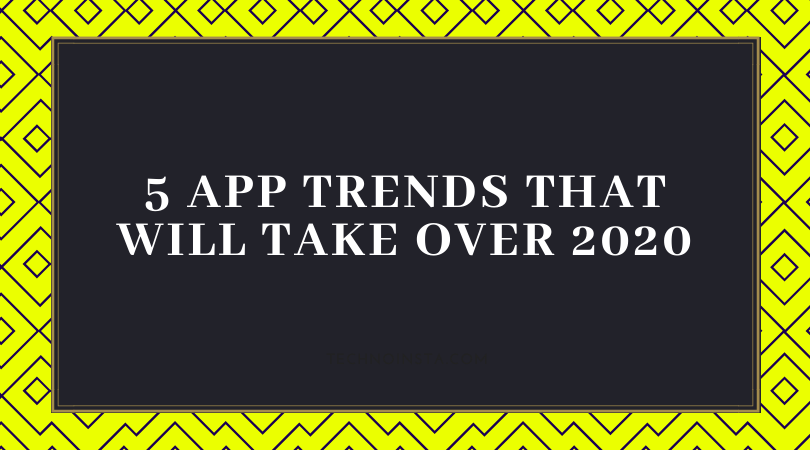5 App Trends That Will Take Over 2020
When you already believe there’s an app for everything, developers always manage to take it a step further. It’s been over a decade, but apps have already improved our health and quality of life. In 2020, app development is only at the beginning. Read on to find out upcoming app trends that are taking mobile usage to the next level.
Beacon Technology
Beacons are small, wireless transmitters that use low-energy Bluetooth technology to send signals to other smart devices nearby. They connect and transmit information to other tools for more accurate information and location.
We’re already familiar with restaurants and retailers using this as advertisement, promotions, communication, and navigation. What makes beacon technology more trendy than ever is how it’s reaching areas we never imagined we could with our smartphone. Instead of carrying around change or cards, you can pay for services with a scan of a QR code.
At https://shinepay.co/laundromat, they state how accepting payments on machines has never been more simple, reliable, and cost-effective. Even laundromats are installing hardware in laundry machines for laundromats and apartment complexes so that users can pay with their app.
It eliminates the need to carry handfuls of quarters or cards, and it can be used without WiFi. This is possible by installing Bluetooth hardware, and it can work in junction with coin slots, or as a standalone solution.
Wearables
According to Market Research Engine, the digital health monitoring market is projected to grow to $245.5 billion by 2024, and that will be driven by a lot of new advances in health monitoring devices that are wearable.
Wearable technology is devices worn to track information related to health and fitness. The most common are smartwatches, which are capable of tracking steps, heartbeats, and sleep patterns. Now, wearable tech is expanding past watches. Here are some of the new releases:
Jewelry
While it’s a similar accessory compared to smartwatches, it’s more discreet while having the same health-tracking capabilities. Many brands are using smart rings and bracelets, which is worn like standard jewelry, and it sends information to your smartphone. Compared to smartwatches, it’s more fashionable, less distracting, and more suitable for many offices.
Implantables
Implantable refers to tech that’s used internally, and it can be a more intrusive form of wearable technology. However, it’s essential for in-depth monitoring. One example is a wearable called Dexcom Continuous Blood Glucose monitor: it uses tiny sensor “needles” that are implanted into the skin, and it provides real-time readings of your glucose levels.
Smart Clothing
For those that can’t wear accessories, implantables, or need overall monitoring, there are smart clothes. Companies are currently working on making these items commercially available to the public. Some products that are already out for purchase are socks that can detect foot ulcers and swimwear that alerts you when it’s time to apply sunscreen.
5G
Businesses like Verizon and Samsung are already gearing for the launch of dedicated 5G-capable chips, which will soon change every mobile application development strategy. This means that users will have fast internet speed in their hands, zero lags, and loading time, no matter the device. 5G technology is also bound to change the grounds for technologies and industries like AR/VR and gaming.
Instant Apps
The instant app is a small software program that enables end-users to test out a portion of an app without installing it on a device.
Android instant apps are widely used in e-commerce and the gaming industry. For instance, the New York Times was one of the first to create an instant app, a crossword puzzle. It allowed the game to be available to a broad audience without the headache of downloading it without testing it out first.
AR/VR
What was once a science-fiction concept has now become a science-based reality. Augmented and virtual reality are being used in many industries, from gaming, shopping, to employee training and monitoring in real-time. What’s the difference, and how is it being used?
Augmented Reality
Augmented reality overlays computer-generated images or text onto the real world. Examples of augmented reality include Snapchat lenses and the game Pokemon Go, and it’s extending to other apps to enhance the user’s experience. Now shoppers can browse their favorite products from all angles in the comfort of their home.
Virtual Reality
Virtual reality (VR) is similar, except it’s an immersive experience that shuts out the physical world. It requires devices such as headsets or goggles. While it was initially used for gaming, it is used to replicate scenarios, 360 entertainment, and can even be used for therapeutic purposes.
The Future of the App Industry
These app trends are the testament of how far the industry has come, and how much more it will expand in the near future. With future-focused developers working diligently to discover the next big app, more life-changing features will be accessible to the public.



